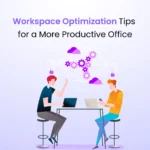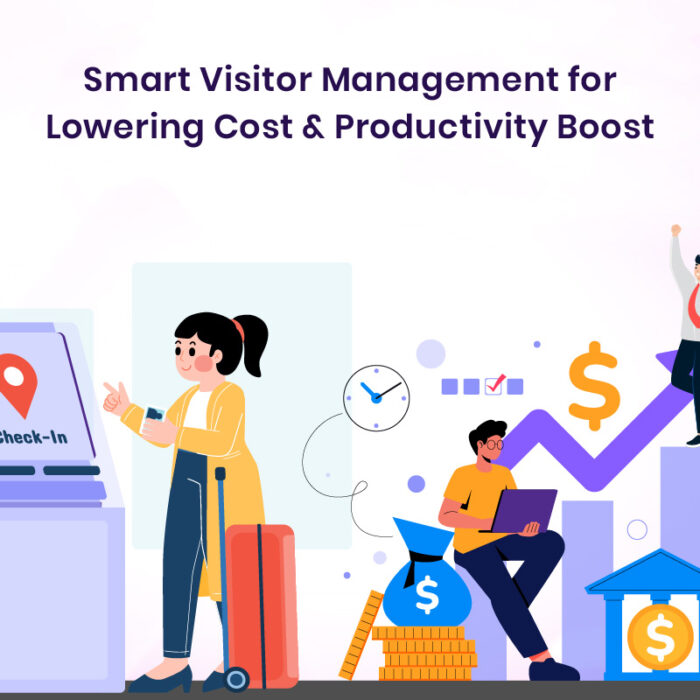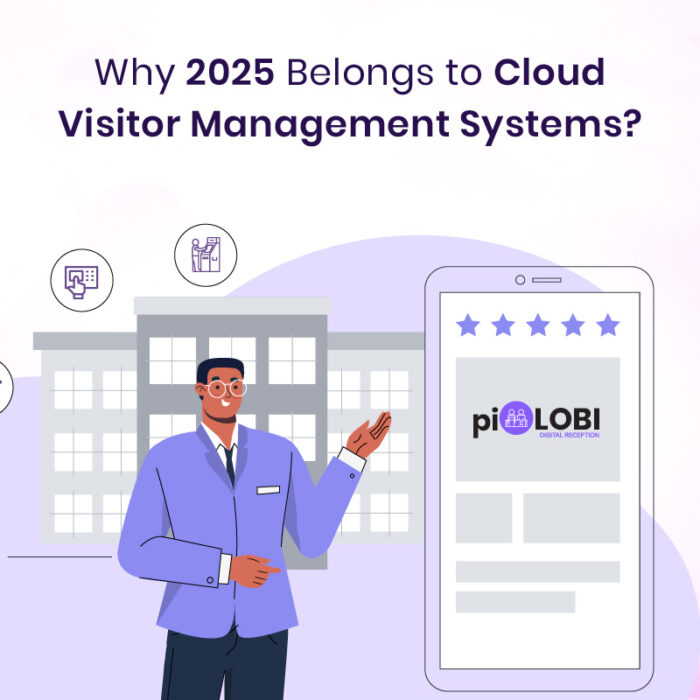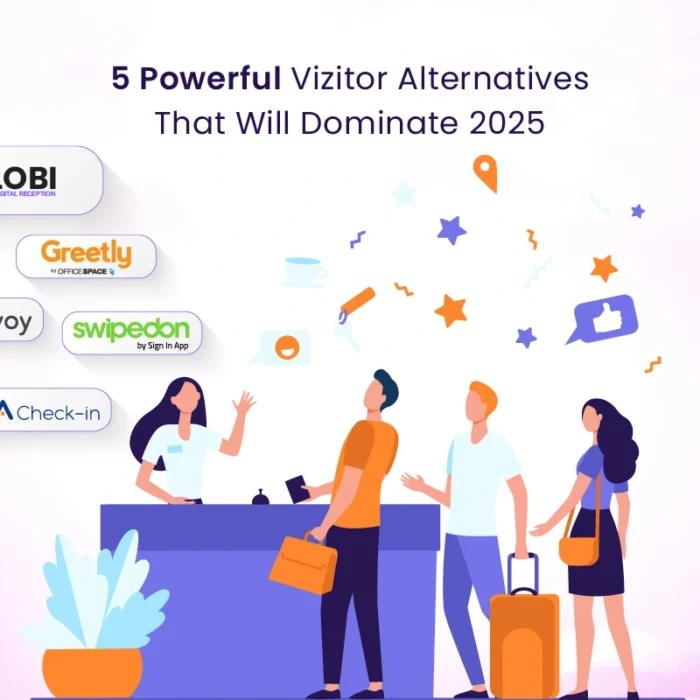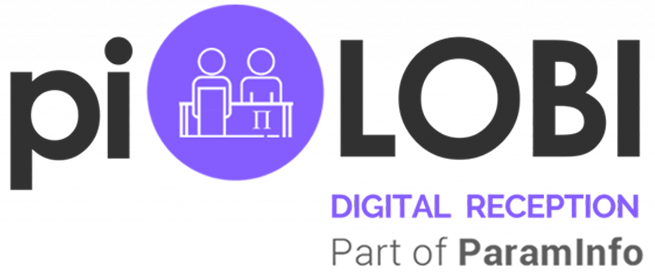
Advanced Visitor Management Systems for Safe Visitor Experience
The dynamic and exacerbated nature of the healthcare industry means it is constantly changing to meet the demands of its patients, staff, and visitors. Efficiency and patient safety are essential in the rapidly changing healthcare environment of today.
However, more than 30% of hospitals come across unlawful access incidents due to ineffective visitor management systems. This concerning figure draws attention to a serious problem facing healthcare facilities today.
Traditional approaches to hospital visitor management frequently result in inefficiencies and possible security breaches due to drawn-out check-in procedures, incomplete visitor logs, and insufficient security measures.
Imagine visiting a hospital where the check-in process is as easy and quick as it is at a hotel, visitor data is precisely tracked in real-time, and innovative security measures emphasize patient safety.
So, here’s come a visitor management system which can be implemented in the healthcare industry. The implementation of this technology has become essential to ensuring patient safety, enhancing operational effectiveness, and upholding regulatory compliance in healthcare establishments.
In this article, we’ll examine how advanced visitor management systems (VMS) can transform hospital visits, ensuring that each visit is efficient, safe, and well-organized.
The Requirement for Hospital Visitor Management Systems
Every day many individuals attend hospitals for various medical reasons, including emergencies, doctor consultations, supplies and deliveries, and even to just visit their loved ones. Typical, manual procedures for managing these visitors may result in problems such as the following:
- Insufficient efficiency: Long wait times and overcrowded lobby areas may negatively impact visitors’ and patients’ experiences.
- Security imperfections: The lack of real-time tracking provided by manual sign-ins raises the possibility of illegal access.
- Compliance Difficulties: A leading-edge VMS can make ensuring compliance with privacy and health laws like HIPAA easier.
Therefore, advanced visitor management systems address these issues by implementing streamlined, safe, secure, and digitalized procedures.
Key Features of Advanced Visitor Management Systems for Hospitals
The following are some vital elements of sophisticated Visitor Management Systems (VMS) made especially for medical facilities:
Real-time Visitor Tracking and Monitoring
- Monitoring visitors’ movements in real time throughout the hospital, enhancing security and ensuring that people who aren’t supposed to be there don’t enter restricted areas.
- Visitors can be easily found, and real-time analytics can streamline security management.
Pre-Registration and Appointment Scheduling
- Enables visitors to pre-register online, expediting the check-in procedure and minimizing traffic in the lobby.
- Integrated scheduling facilitates better traffic flow and reduces wait times by ensuring that guests arrive during their scheduled periods.
Health Screening and Compliance Checks
- It can impose admission restrictions based on health standards, guaranteeing adherence to health laws and lowering the chance of infection.
- Incorporates temperature checks, vaccination verification, and health screening questions into the check-in process to comply with safety and health regulations.
Visitor Badge Printing and Access Control
- It allows for easy identification and management of a visitor’s movement within the hospital by issuing visitor badges featuring photographs, visit information and access levels.
- QR codes can be used on badges to indicate access permissions.
Digital, Contactless Check-in
- Contactless solutions like facial recognition and QR codes improve health and safety regulations.
- Reduces wait times and manual entry by enabling visitors to check in digitally utilizing self-service kiosks or mobile devices.
Instant Notifications for Hosts
- Immediately notify the host staff members of the visitor’s arrival. This will prevent delays and assist with the timely completion of appointments.
- Additionally, this function enables medical professionals to prepare for meetings with suppliers or patient families.
Emergency Management and Evacuation Support
- It gives access to a real-time log of all individuals present, crucial for precise headcounts and evacuations during emergencies.
- This increases safety for both visitors and patients by ensuring that the hospital has complete control over who needs help in an emergency.
Data Collection and Analytics
- Hospitals can keep records for operational planning and compliance audits because data is safely maintained.
Customizable to Hospital Needs
- Adaptable and flexible to the hospital’s design, visiting guidelines, and the particular needs of specific patients or departments.
- Enables administrators to alter health screenings, badge designs, and check-in questions to suit hospital standards.
- Advanced Visitor Management Systems are a vital tool for improving hospital security, productivity, and patient care because of these capabilities, which eventually lead to a safer and more orderly healthcare setting.
Integration with Hospital Systems
- Integrates seamlessly with communication platforms, electronic health records (EHR), and hospital security systems to ensure efficient data flow across departments.
- Facilitates efficient data processing and communication, which lessens the administrative burden and boosts operational effectiveness.
Benefits of Adopting a Hospital Visitor Management System
A hospital’s operational effectiveness, patient safety, and visitor experience can all be improved by using an advanced Visitor Management System (VMS). The following are some benefits of VMS:
Enhanced Safety for Patients and Staff
A hospital visitor management system creates a secure atmosphere by limiting access to vulnerable locations, spotting possible threats, and making sure that only people with permission can enter critical areas like intensive care units or pediatric wards.
Improved Visitor Experience
Shorter wait times and quicker check-ins improve the visitor experience. Fewer interruptions for both hospital personnel and visitors improve people’s perceptions of hospital operations and service in general.
Analytical Data for Well-Informed Choices
With the analytical tools included in advanced VMS solutions, hospitals can evaluate patient-to-visitor ratios, peak visitor periods, and trends of frequent visits. This information can drive resource allocation, visitor policies, and staffing levels for increased operational effectiveness.
Adherence to the Regulations
Hospitals frequently have to comply with strict data and health laws. A hospital visitor management system can make record-keeping more efficient and facilitates compliance with regulations such as HIPAA. Digital records guarantee secure storage and easy accessibility of visitor data for audits and reporting.
Selecting the Right Visitor Management System for Your Hospital
To make sure a VMS satisfies the particular needs of your hospital, take into account the following considerations while choosing one:
- Integration with Current Systems: For a seamless experience, ensure that the VMS is integrated with the emergency, security, and health screening systems at your place of work.
- Customizability: Select a system that is adaptable to your hospital’s design, the rules governing visitors, and your patients’ requirements.
- Scalability: Pick a system that can expand to meet the demands of your hospital, whether that means more security needs or an increase in the number of visitors.
- Usability: Easy-to-use interfaces are essential to guarantee that all guests, no matter their technology proficiency, can effortlessly complete the check-in procedure.
piLOBI, is a visitor management system that comes with advanced security features. Thus, by utilizing this visitor management system you can get the best solution to optimize your visitor management process.
In A Nutshell
Indeed, the best features of advanced visitor management systems make them the perfect option for medical facilities looking to increase visitor management with effective check-ins, improved security, health compliance, real-time communication, and comprehensive analytics. Due to its capabilities for integration and adaptability, it satisfies the unique requirements of healthcare facilities.
Hence, hospitals that adopt such approaches put themselves at the forefront of innovation and enhance patient and visitor well-being as well as operational efficiency.

